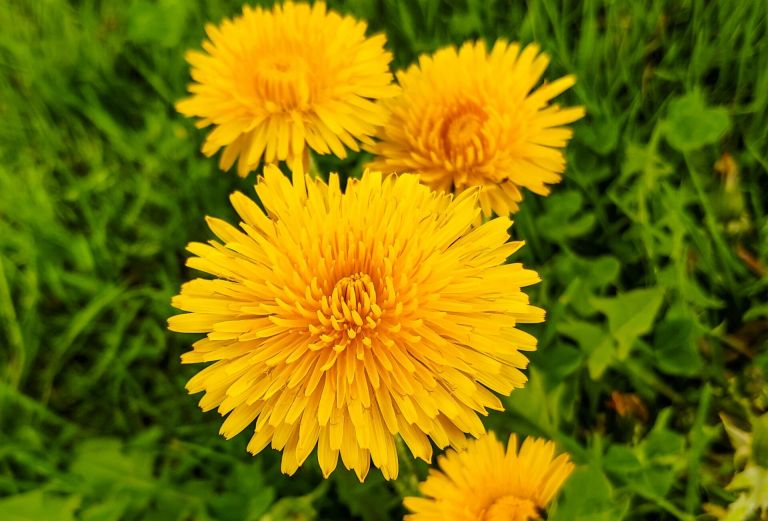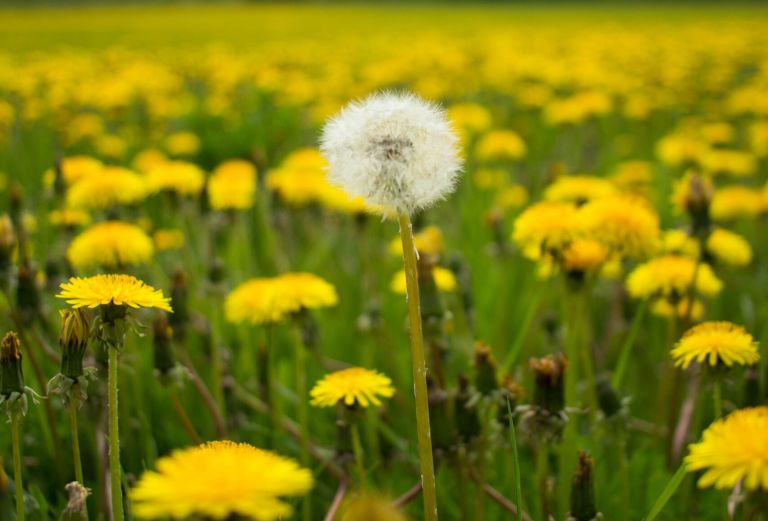
Written by garden apprentice Lewis.
Taraxacum officinale.
Misunderstood – misinterpreted – misused.
Survived for millennia.
A diverse ailment.
With complex nutritional benefits.
Abundant in all terrain.
The ultimate organic soil conditioner.
In recent years, our naïve obsession for technological innovation moves towards complete disconnect and regard for the natural world. One of nature’s solutions to solve many a problem is quietly going about its work trying to catch our attention. It also seeks to remind us, particularly those in the west, of its forgotten mistranslated history – taraxacum officinale – ‘pee-a-bed’. The inconspicuous common dandelion.
If you’re like me, sat here wondering, ‘pee-a-bed’? According to English folklore the name refers to the strong diuretic effect of the plant’s roots – sounds legitimate if you ask me. Anyway, let’s not go too far down the garden path with that one.
So – dandelion. An all too familiar childhood memory, whether it was running around kicking each and every seedhead in sight, counting down the ‘clock’ or making a wish – these ancient organisms have left, for some, an underlying impression in our upbringing. But, also, as a recent exchange with my grandma suggests – a forgotten sentiment.
Not too long ago I visited my grandma, a proud gardener of an era, you know the type – a central lawn bordered by immaculately spaced bedding. Whilst touring me around the garden, all of her attention was focused not on her thriving African marigolds but on all the dandelions in the neighbour’s garden: ‘Vera has a gardener as well you know – how did they miss those – they are going to be all over my lawn now – you watch come spring!’
My grandma is not alone here – where and why has this ideation evolved, from fairy-tale to nightmare? Why is it now when we step foot in a garden, we just want to eradicate them all at first glance? When, believe it or not, there once was a time when grass was in fact weeded out from lawns in order to make more room for the lion-toothed wonder.
One for us all to dwell on. Anyhow, Taraxacum officinale. Let’s continue.

Believed to have evolved around 30 million years ago – dandelions, who belong to the Asteraceae family, along with calendula, tagetes, zinnia & dahlia, have been used as a complete food source and as an herb by a plethora of ancient civilisations. Which makes sense considering the medicinal properties Asteraceae is known for. It would also be no exaggeration to say that they are more nutritious than most of the vegetables in the garden, containing high amounts of vitamins A, C and K along with numerous other phytochemicals which all contribute to the maintenance of a fully-functioning immune system. From warts to the plague, they have been prescribed for every ailment and hailed by herbalists as the perfect plant medicine – also aiding the digestion system to operate at peak efficiency.
Dandelion bed in the walled garden anyone?
Members of the Asteraceae family are also especially common in dry environments and pollinated by insects; so, as we move into a long-predicted changing climate, dandelions will now become even more vital in playing that role as we head towards an uncertain future.
The health of our soil is also vital at this moment in time – with that in mind, it would surely not be a surprise (if you didn’t already know of course!), that dandelions are also incredibly efficient soil conditioners and fertilisers – especially for lawns. With a deep taproot and widespread roots, they help loosen dense soils, which in turn reduces erosion. On top of all this, they have the ability to draw nutrients that are buried deep in the soil towards to surface, making them available to other plants. Win win!
At the Palace we consciously leave 70% of the grass on site untouched. This decision was influenced by biodiversity studies from internationally renowned botanist Dr Mark Spencer and wildlife surveyor Joe Beal, which showed the abundance and diverse range of flora and wildlife on site. So, as you walk around don’t forget to take a closer look amongst the untouched blades, for you may still be fortunate enough to catch a glimpse of this special humble dweller. And maybe even amongst the vegetables where they seek residence in what was once home.
So there we have it: a fast growing, hard to kill, drought tolerant, ‘seen-it-all’, ‘been there done that’ pollinator’s dream of a perennial. The humble Taraxacum officinale should be involved in every conversation regarding the evolution of the garden, as it answers several of our fears as we head into a meteorological uncertainty – a shift towards a harmonious coexistence with our environment.